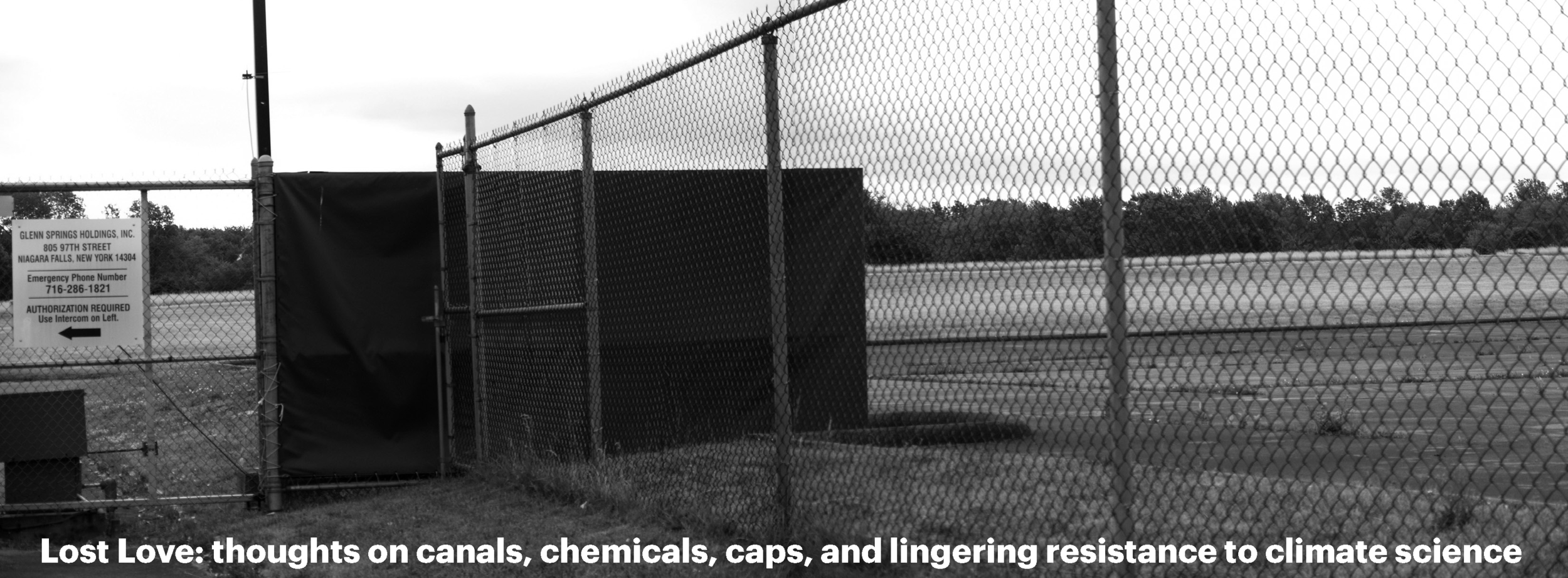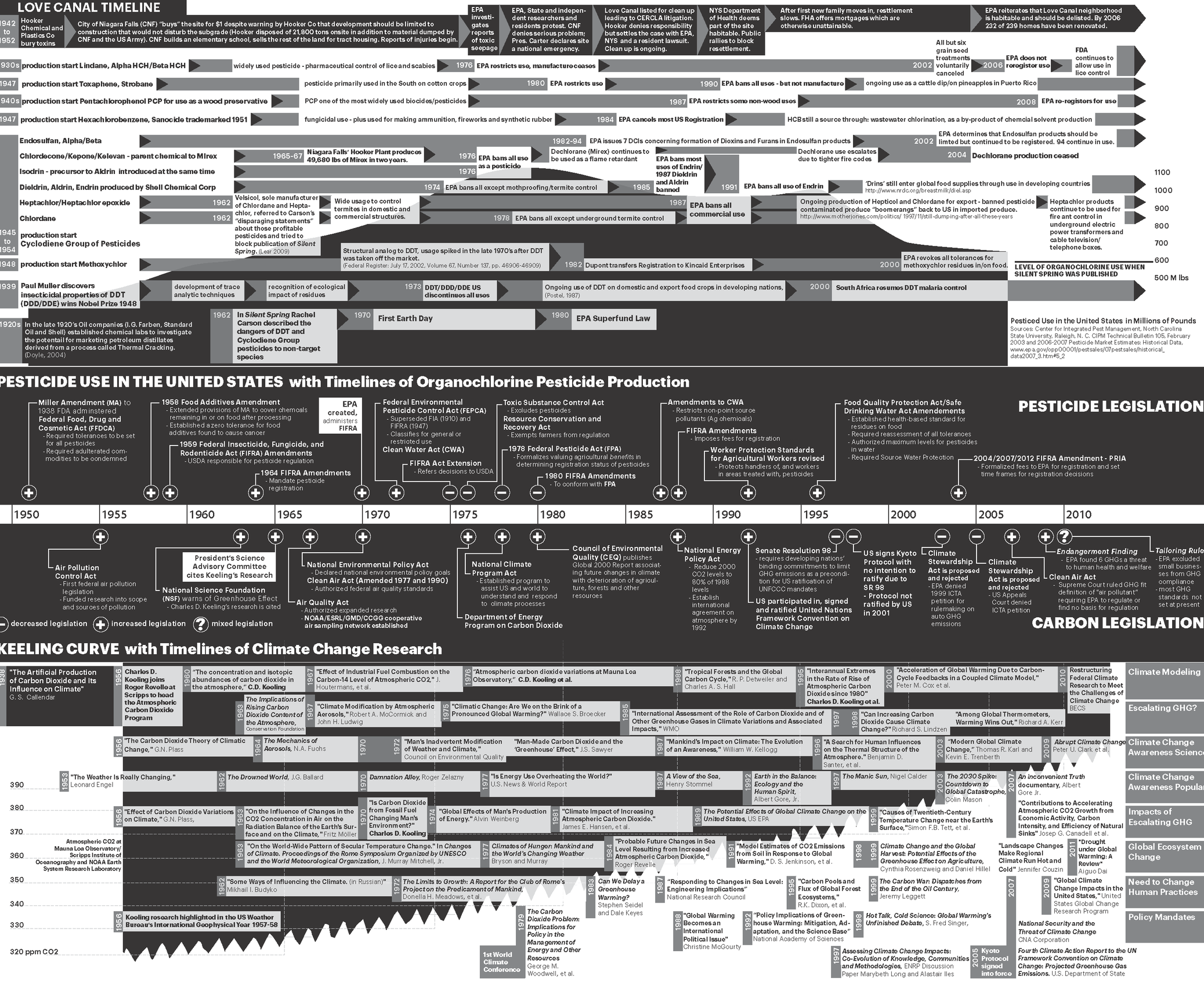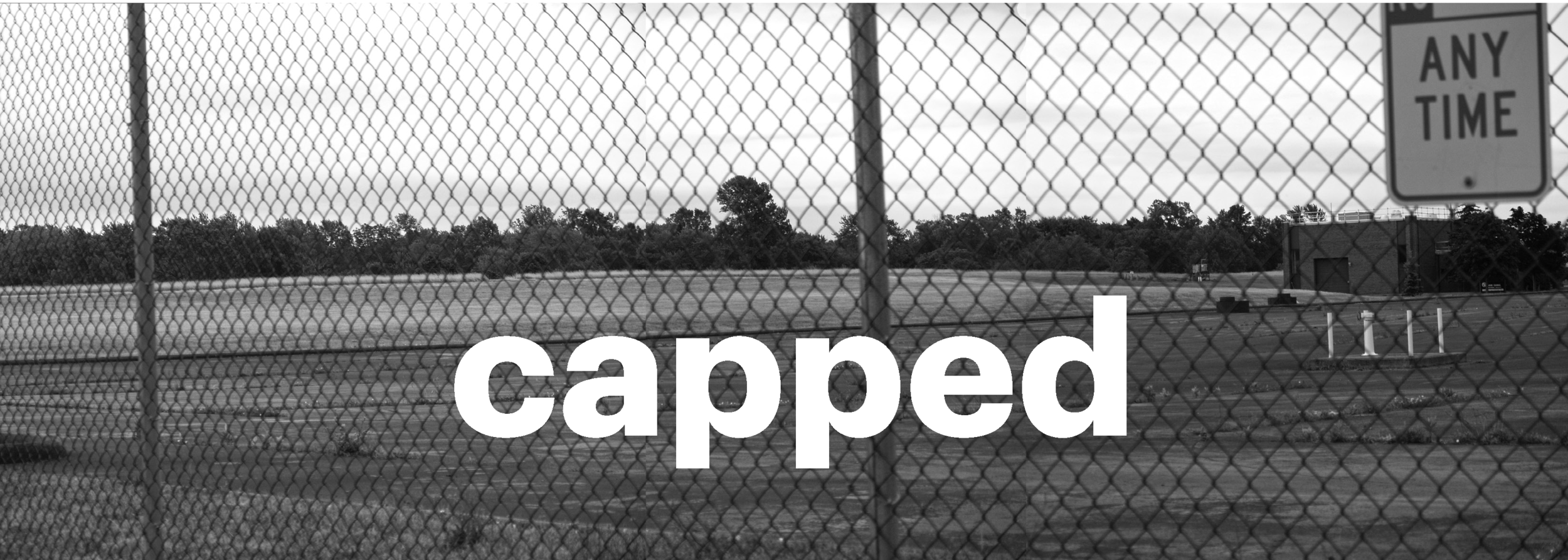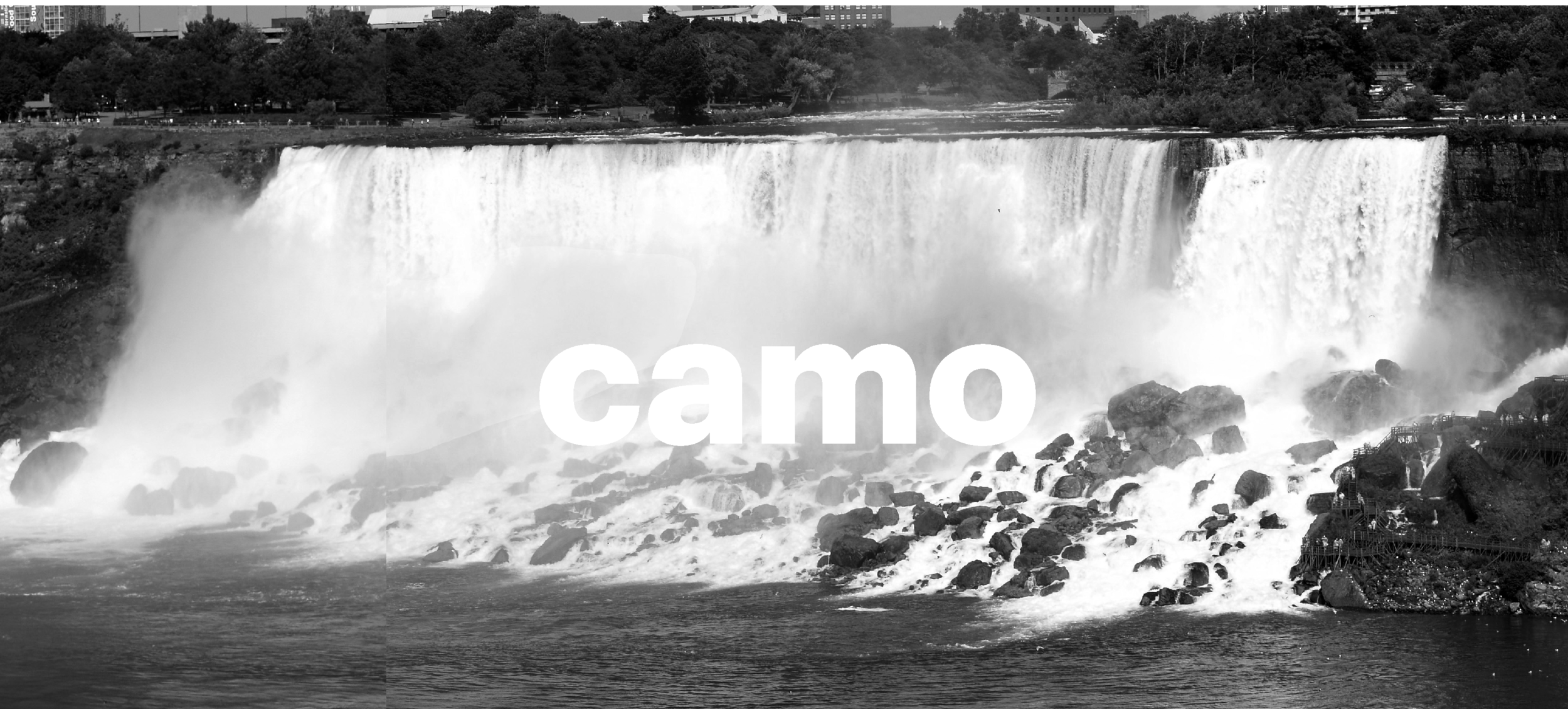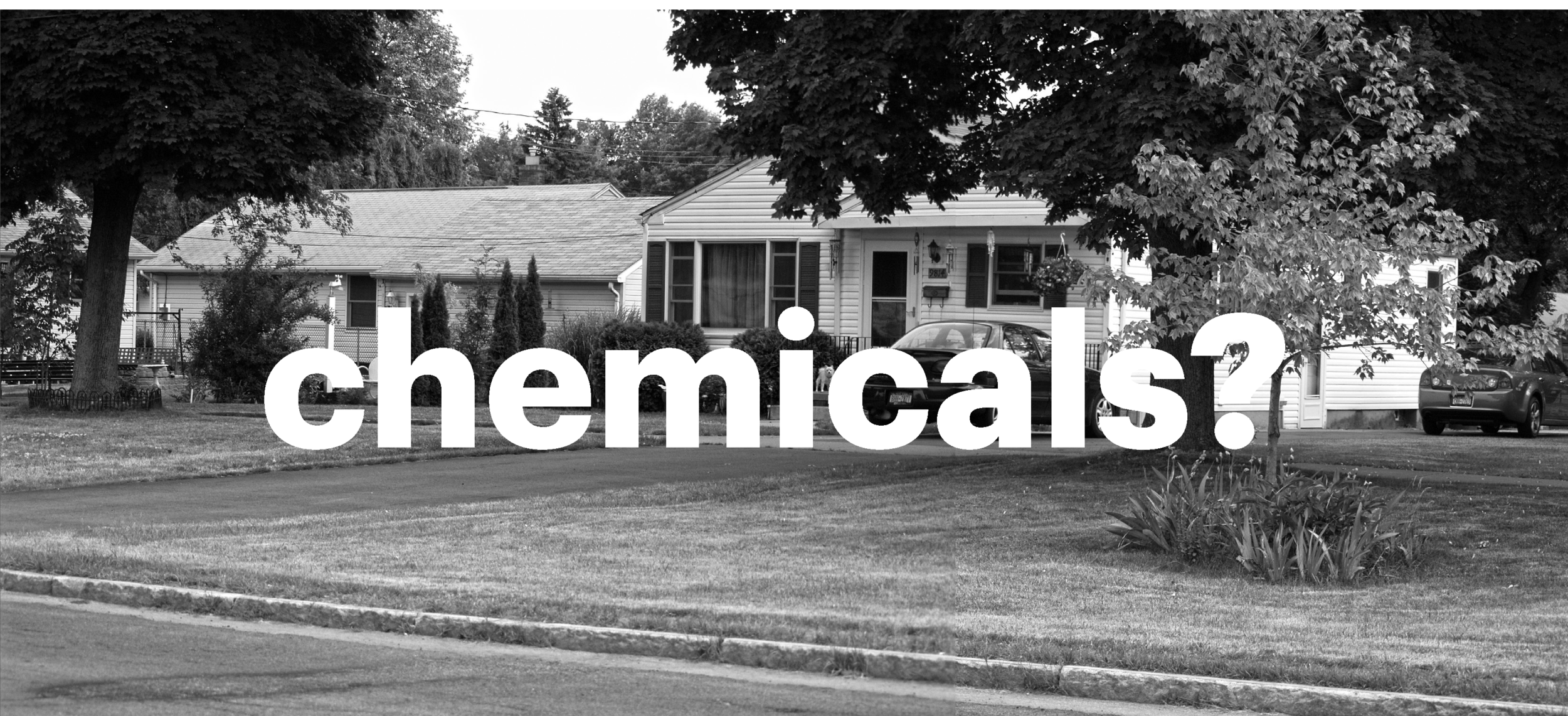Lost Love: thoughts on canals, chemicals, caps, and lingering resistance to climate science
presented at Council of Educators in Landscape Architecture Conference, February 2013.
The publication of Silent Spring and the discovery of the Keeling Curve marked monumental moments in the history of the human species’ understanding of its own positioning within global ecosystem relationships. On the fiftieth anniversary of The New Yorker’s serialization of Silent Spring, Rachel Carson’s challenge to governmental lassitude toward industrial chemical contamination of the American landscape, it is evident that her message has not curtailed the development of more complex pesticides and genetically modified foods. Her observation that: “For the first time in the history of the world, every human being is now subjected to contact with dangerous chemicals from the moment of conception until death.” foreshadowed the scope of climate change projections based on C. David Keeling’s upward-rising curve of measured atmospheric carbon dioxide. In 1979, Love Canal entered the American environmental lexicon as an emblem of top-down municipal failure and bottom-up environmental activism, yet today, it is a relatively unmarked memorial to a tragedy that Americans appear to prefer to forget. It is has become a landscape emblematic of ambivalence to the concept that human landscape practices have the capacity to alter environmental cycles sustaining life on earth continues to this day to be a point of popular contention. The following notes, photographs, and extracts from a poster-sized graphic timeline plot the negotiation of knowledge and resistance through the lens of the chemical industry, capping, and current development of the Love Canal site in Niagara Falls, New York.
Lost Love: Thoughts on canals, chemicals, caps, and lingering resistance to climate science.
